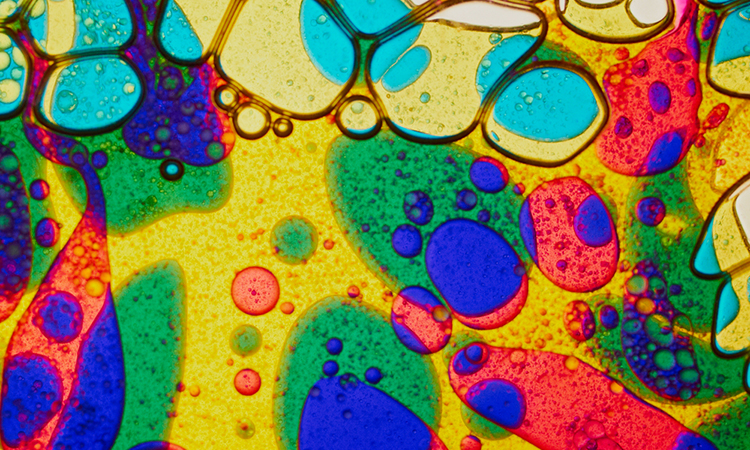Gamma delta T cells: a rising star in cancer therapy
Posted: 28 February 2024 | Kate Rochlin (IN8bio), William Ho (IN8bio) | No comments yet
Gamma delta (γδ) T cells comprise a distinct and powerful subpopulation of T cells, bridging innate and adaptive immunity, that holds great promise for treating cancer. IN8Bio co-founder and CEO William Ho and COO Kate Rochlin discuss what makes γδ T cells unique, how preclinical research suggests their antitumour activity can be harnessed therapeutically, and where research on these ‘rising stars’ is headed next.


Over the past 25 years, T-cell therapies have gained significant ground in the treatment of cancer. While the spotlight has been firmly fixed on chimeric antigen receptor T (CAR-T) cells and other cell therapies based on alpha beta (αβ) T cells, another subpopulation of T cells – the gamma delta T (γδ T) cell – also holds immense promise against cancer. Preclinical research on γδ T cells has made great strides since the cells were first identified in the 1980s, with γδ T-cell therapies from several companies, including IN8bio, now in or nearing clinical trials for various cancers.
γδ T cells have unique functional and therapeutic features that differentiate them from their better-known αβ T cell counterparts as potential cancer therapies. Here, we shed more light on γδ T cells as an emerging avenue of cell therapy for cancer, through the lens of preclinical studies.
A different kind of T cell
γδ T cells are distinguished from αβ T cells by the diversity and structure of their T-cell receptors (TCR)1 the former have invariant TCRs consisting of one gamma and one delta chain, respectively encoded by the TCRG and TCRD genes, whereas the latter have TCRs consisting of alpha and beta chains encoded by the TCRA and TRCB genes. γδ T cells also comprise a smaller percentage (2-10 percent) of lymphocytes than αβ T cells (about 70 percent), which initially led researchers to assume γδ T cells were similar to αβ T cells but less important in terms of their functions.
Belying that earlier assumption, multiple studies have now shown γδ T cells to be very powerful components of the immune system that sit at the nexus of innate and adaptive immunity.2-5 Similar to other innate immune cells, γδ T cells are part of the first line of immune defence, capable of distinguishing between cells that are ‘dangerous’ because they are sick or stressed and cells that are normal and healthy.2,3 However, unlike αβ T cells, which are activated by the presentation of antigens to their TCRs, γδ T cells do not require antigen presentation to become activated. Instead, they are activated via a complex set of other receptors, including the natural killer receptor NKG2D, that respond to specific factors secreted by stressed, infected and/or transformed cells.
In addition to their role in innate immunity, γδ T cells are also capable of acting as professional antigen-presenting cells (APCs) that drive dendritic cell (DC) maturation, B-cell and natural killer-(NK) cell responses, and other aspects of adaptive immunity. γδ T cells can be envisioned as generals that initially respond to a threat (innate immunity), then coordinate the actions of the whole military force (adaptive immunity). Only a few such generals are needed, which may explain why these powerful cells occur in relatively lower abundances than αβ T cells.
A mighty defender against cancer
A critical role for γδ T cells in cancer was demonstrated by the seminal work of Dr Lawrence Lamb, IN8bio’s scientific founder and Chief Scientific Officer, in the mid-1990s, when he showed for the first time that high frequencies of γδ T cells were associated with survival in paediatric leukaemia patients who had undergone bone marrow transplantation (BMT).4 The importance of γδ T cells as first-line defenders against cancer has been further illustrated by studies in which mice lacking the murine equivalent of γδ T cells spontaneously developed tumours9-11 These findings suggest that, without the surveillance action of γδ T cells, tumours would occur far more frequently in humans.
As cancer therapies, γδ T cells are especially attractive because they are activated by stress signals expressed by tumour cells, rather than a single specific antigen on a tissue type. This results in little or no toxicity of γδ T cells towards healthy cells that may express the same antigens as the cancer cells. In turn, this gives γδ T cells a wider therapeutic index and potential safety advantage over conventional CAR T cells, which can indiscriminately kill both cancer and healthy cells expressing the CAR’s target antigen. γδ T cells should also be effective across all types of cancer because they share the common feature of cellular stress, and they may be more potent and toxic towards certain types of cancer, such as glioblastoma multiforme (GBM).
Preclinical studies have explored various ways of modifying γδ T cells to enhance their utility and effectiveness as cancer therapies. These include engineering the cells to express cytokines that promote their maturation and/or differentiation, and engineering drug-resistant γδ T cells that can be combined with chemotherapies, which stress cancer cells but would otherwise also deplete the T-cell population.5 Other modifications include transducing γδ T cells with a conventional CAR to enhance tumour reactivity or,6 as IN8bio has done, with a non-signalling CAR (nsCAR) that binds its target antigen without triggering T-cell activation, thereby helping the γδ T cell adhere to target cells but only kill cancer cells that secrete stress ligands.
Beyond therapeutic applications, preclinical research is currently focused on better understanding the identity and function of the complex repertoire of receptors that γδ T cells express, and further dissecting the differences between γδ and αβ T cells. For example, a study published demonstrated that PD-1 – a known marker of exhaustion on αβ T cells – is actually a marker of activation on γδ T cells.7 These findings highlight just how different γδ T cells really are, and how much more we still have to learn about them.
As the oncology field evolves towards ‘cell therapy 2.0’, we are excited by the prospect of γδ T cells becoming vital components of the anti-cancer arsenal. Thanks to the efforts of passionate researchers whose preclinical work continues to inform development programmes at IN8bio and other companies, and investors who are beginning to recognise the cells’ distinct identity and potential, γδ T cells are poised to change the paradigm of T-cell therapies in the treatment of cancer.


William Ho is a company Co-Founder, and has served as our President, Chief Executive Officer and Director of IN8bio since its inception. Mr Ho has worked in the biotechnology industry for almost 20 years. Prior to the founding of IN8bio, from 2014 to 2017, Mr Ho was the Founder and Managing Partner at AlephPoint Capital, a private healthcare investment fund. Prior to that, Mr Ho was at New Leaf Venture Partners, a leading healthcare venture capital firm, where he launched and managed the public investments and cross-over portfolio, and served as its Public Investment Director from 2010 to 2014.
Previously, Mr Ho served as a Senior Equity Research Analyst at Bank of America from 2006 to 2009 and an Equity Research Analyst at Piper Jaffray & Co. from 2003 to 2006, covering the biotechnology and life-science tools sectors. Earlier in his career, Mr Ho was responsible for FP&A and operational analysis at CuraGen Corporation and worked as an Associate on the Healthcare Investment Banking team at Cowen, Inc. Mr. Ho was an inductee into the McMaster University Alumni Gallery in 2020 and currently serves as a member of their Dean’s Advisory Board for the Faculty of Science. Mr Ho received an MBA from the University of Notre Dame and a B.S. in Biochemistry from McMaster University.
Co-Founder and CEO


COO – IN8bio, Inc.
Kate has served as our Chief Operating Officer since December 2021. She previously served as the VP and AVP of Operations and Innovation since August 2020. She has over 15 years of extensive expertise in early-stage biotechnology and company development, including conducting scientific research, managing intellectual property (IP) strategy, overseeing strategic & business development and managing company operations including corporate strategy, partnering and team buildout. She joined from Curadigm, a Cambridge, MA-based biotechnology company where she held various senior roles, most recently as Chief Business Officer. She helped lead Curadigm’s spin-out from Nanobiotix and developed collaborations and partnerships around a novel platform to increase therapeutic bioavailability. Crain’s New York Business recognised Kate as one of the top women in tech in 2019.
Previously, she served as the Director of Scientific Affairs at Filament BioSolutions, developing therapeutics in oncology supportive care, specifically for oral mucositis. She is a scientific and business advisor to Immunovent, a New York-based biotechnology company she co-founded and previously served as its Chief Scientific Officer. Dr Rochlin also serves as an executive board member to The Solution Lab, a New York-based non-profit organisation dedicated to providing Ph.D. and MBA students with real-world consulting experiences.
Dr Rochlin earned a PhD in Molecular Biology and Genetics from Weill Cornell Medical College, conducting research at Sloan Kettering Institute, and a BA in Biology from the University of Pennsylvania.
References
- Fichtner A, Ravens S, Prinz I. Human γδ TCR repertoires in health and disease. Cells 9(40):800 (2020).
- Holtmeier W, Kabelitz D. gammadelta T cells link innate and adaptive immune responses. Chem Immunol Allergy 86:151-183 (2005).
- Kalyan S, Kabelitz D. Defining the nature of human γδ T cells: a biographical sketch of the highly empathetic. Cell Mol Immunol 10(1):21-9 (2013).
- Davey M, Willcox C, Baker A, et al. Recasting human Vδ1 lymphocytes in an adaptive role. Trends Immunol 39(6):446-459 (2018).
- Davey M, Willcox C, Hunter S, et al. The human Vδ2+ T-cell compartment comprises distinct innate-like Vγ9+ and adaptive Vγ9- subsets. Nat Commun 9(1):1760 (2018).
- Kabelitz D, Serrano R, Kouakanou L, et al. Cancer immunotherapy with γδ T cells: many paths ahead of us. Cell Mol Immunol 17:925-939 (2020).
- McKenzie D, Hart R, Bah N, et al. Normality sensing licenses local T cells for innate-like tissue surveillance. Nat Immunol 23:411-422 (2022).
- Lamb L Jr, Henslee-Downey P, Parrish R, et al. Increased frequency of TCR gamma delta + T cells in disease-free survivors following T cell-depleted, partially mismatched, related donor bone marrow transplantation for leukemia. J Hemotother 5(5):503-9 (1996).
- Girardi M, Oppenheim D, Steele C, et al. Regulation of cutaneous malignancy by gammadelta T cells. Science 294(5542):605-609 (2001).
- Girardi M, Glusac R, Filler R, et al. The distinct contributions of murine T cell receptor (TCR)gammadelta+ and TCRalphabeta+ T cells to different stages of chemically induced skin cancer. J Exp Med 198(5):747-755 (2003).
- Liu Z, Eltoum I-E, Guo B, et al. Protective immunosurveillance and therapeutic antitumor activity of gammadelta T cells demonstrated in a mouse model of prostate cancer. J Immunol 180(9):6044-6053 (2008).
- Lamb L, Pereboeva L, Youngblood S, et al. A combined treatment regimen of MGMT-modified γδ T cells and temozolomide chemotherapy is effective against primary high grade gliomas. Sci Rep 11:21133 (2023).
- Fisher J, Anderson. Engineering approaches in human gamma delta T cells for cancer immunotherapy. J Front Immunol 9:1409 (2018).
- Davies D, Kamdar S, Woolf R, et al. PD-1 defines a distinct, functional, tissue-adapted state in Vδ1+ T cells with implications for cancer immunotherapy. Nat Cancer (2024 January 3).
Related topics
Cell Line Development, Cell Regeneration, Cell Therapy, Drug Delivery, Drug Development, Drug Discovery, Gene Therapy, T cells, Targets
Related organisations
IN8bio
Related people
Kate Rochlin (IN8bio), William Ho (IN8bio)








